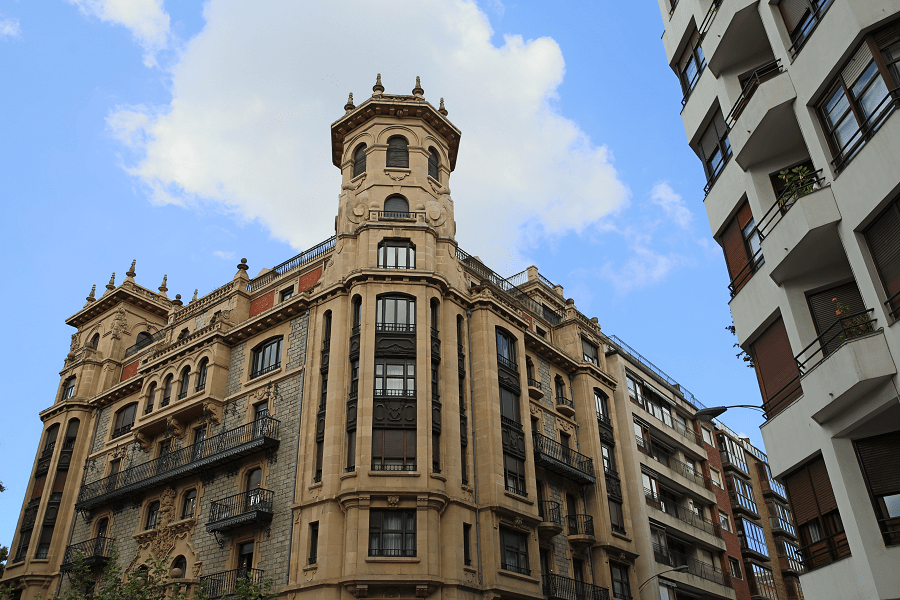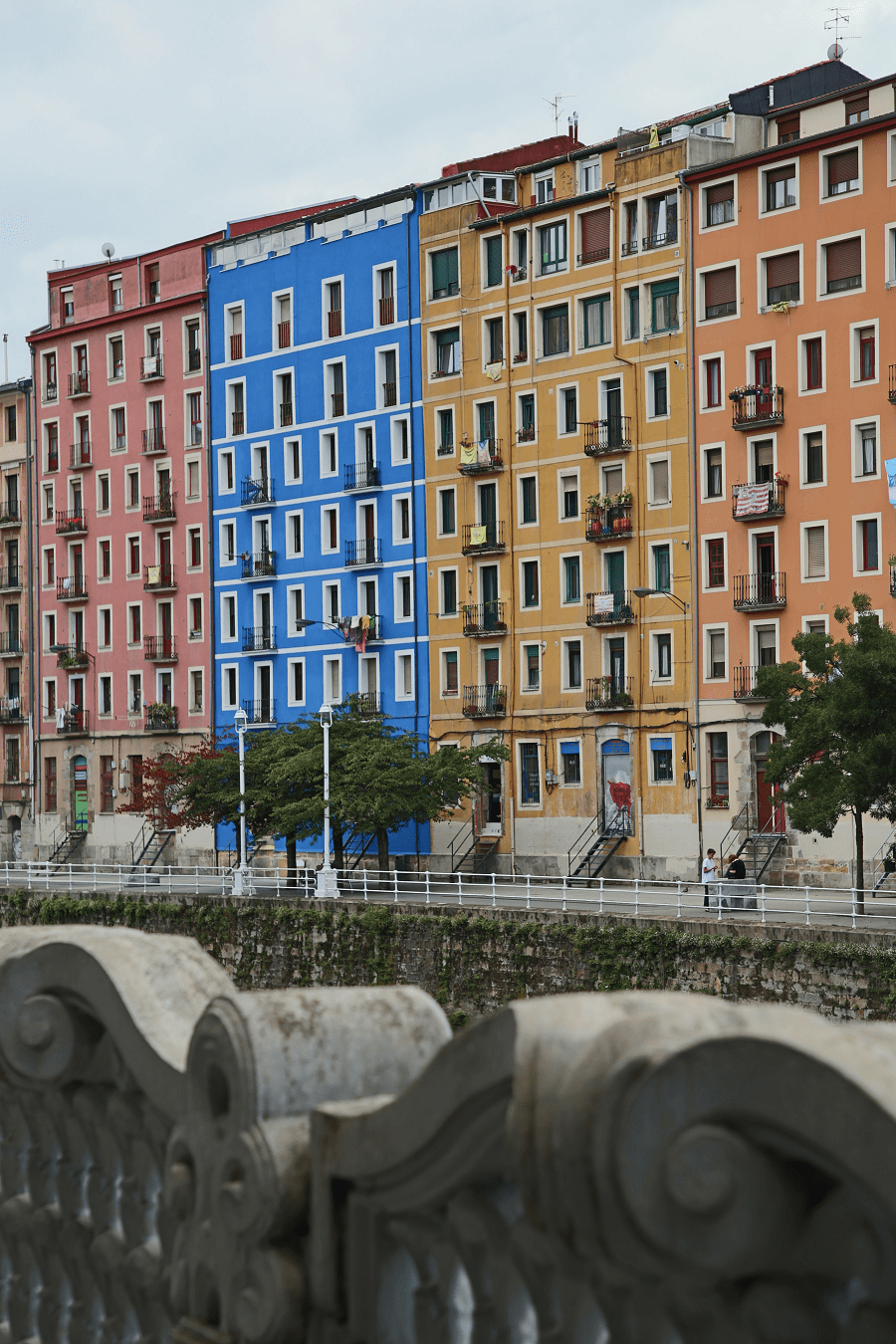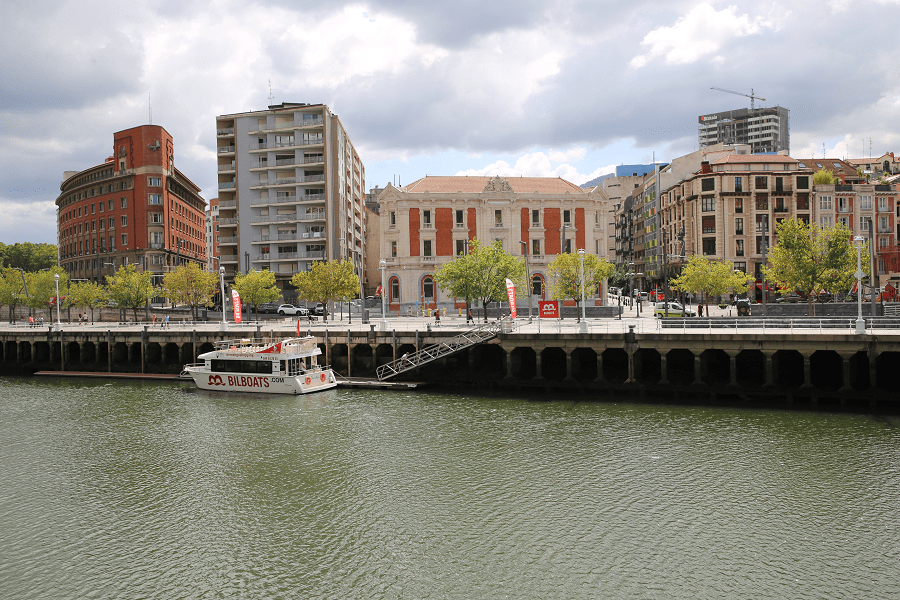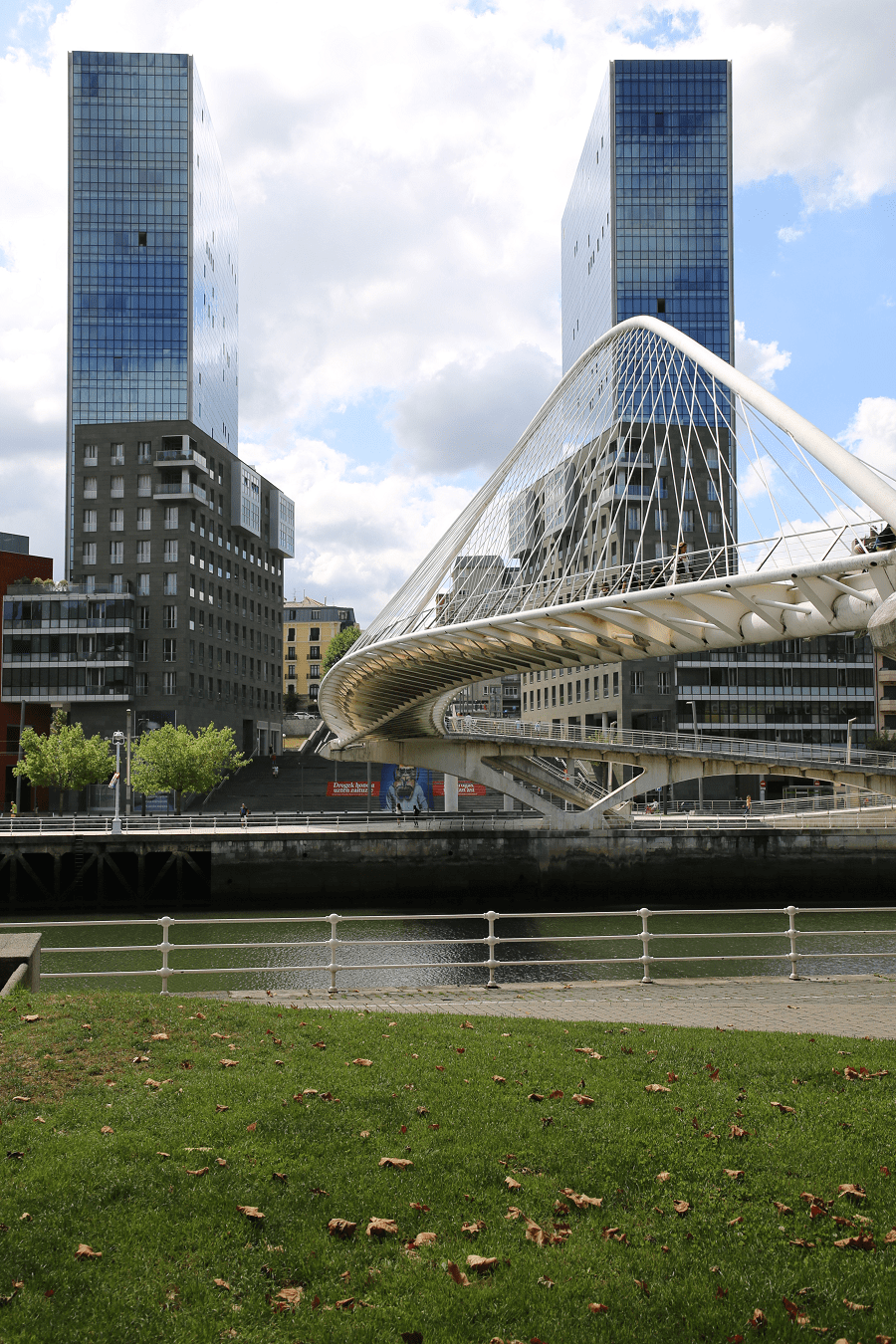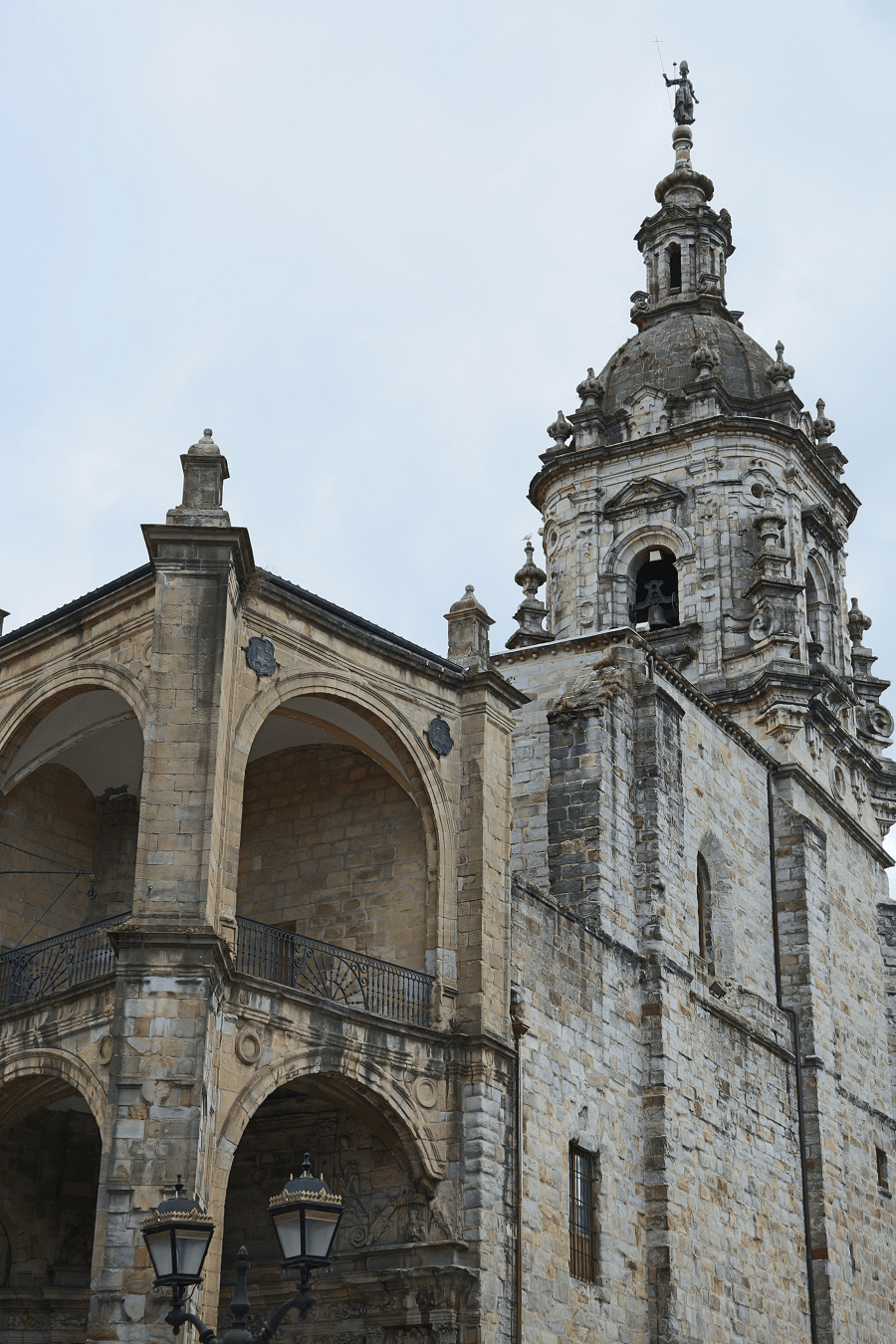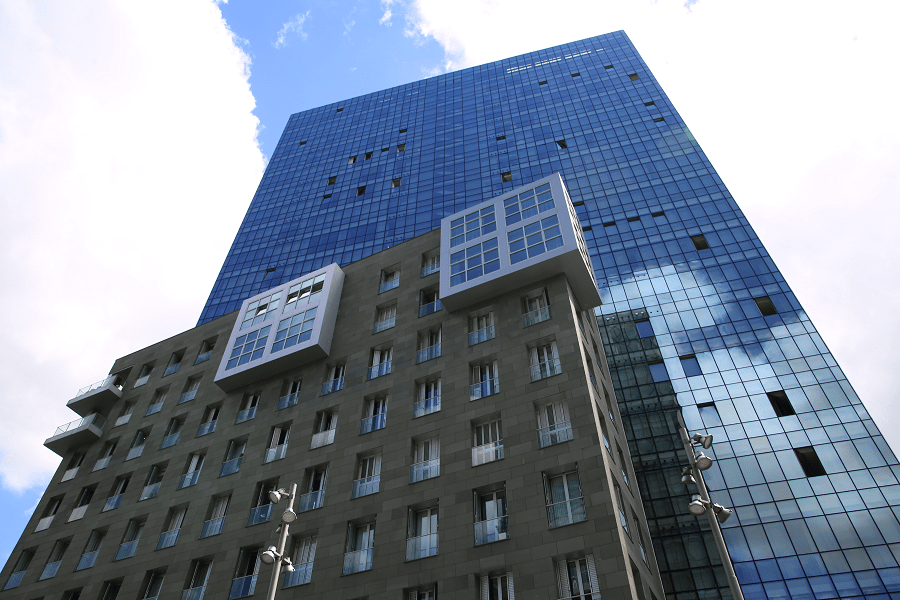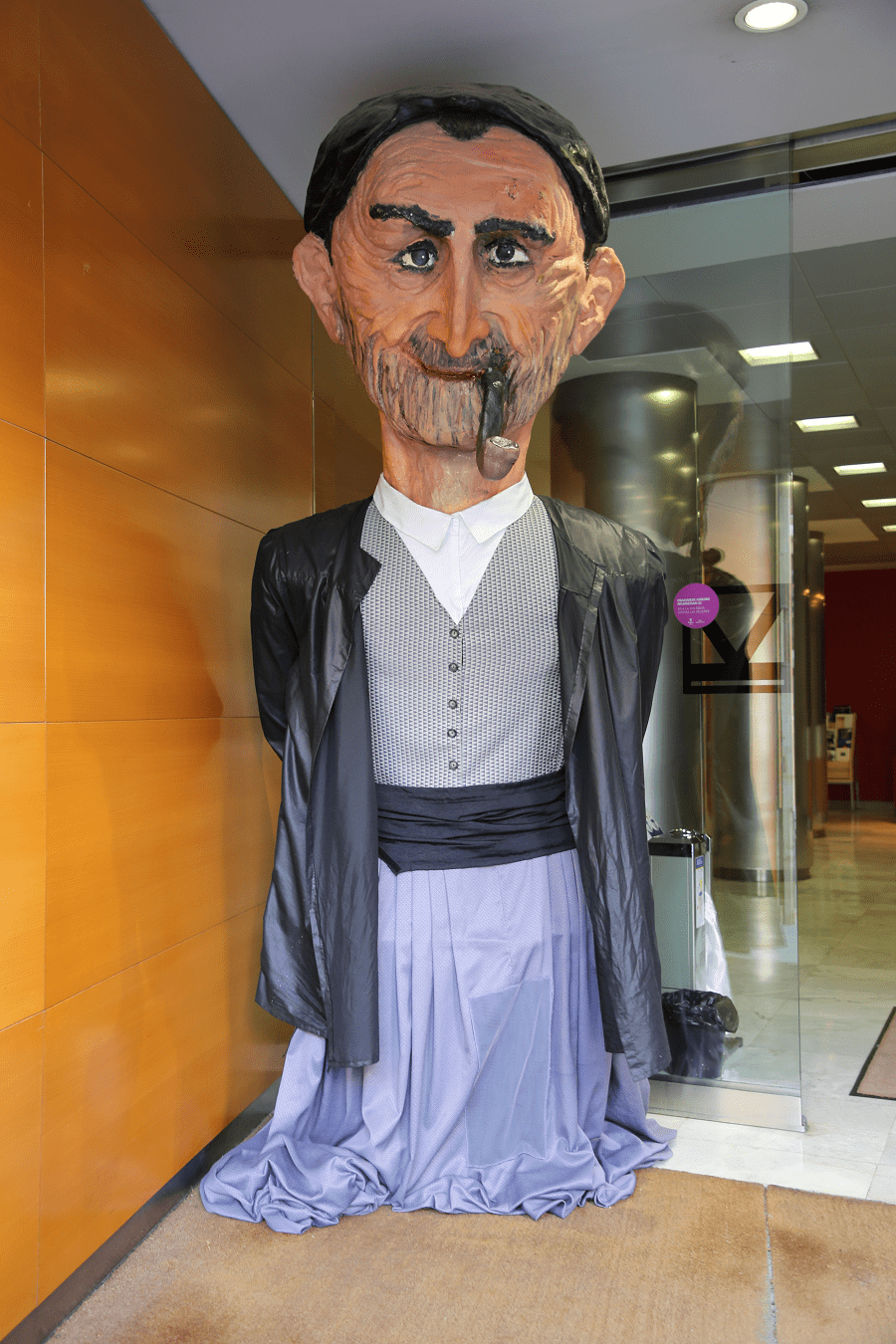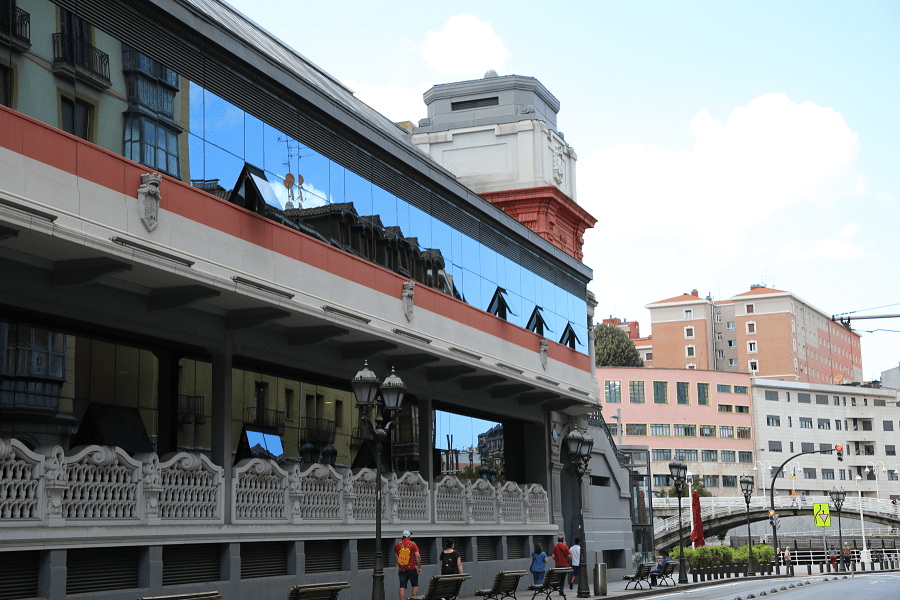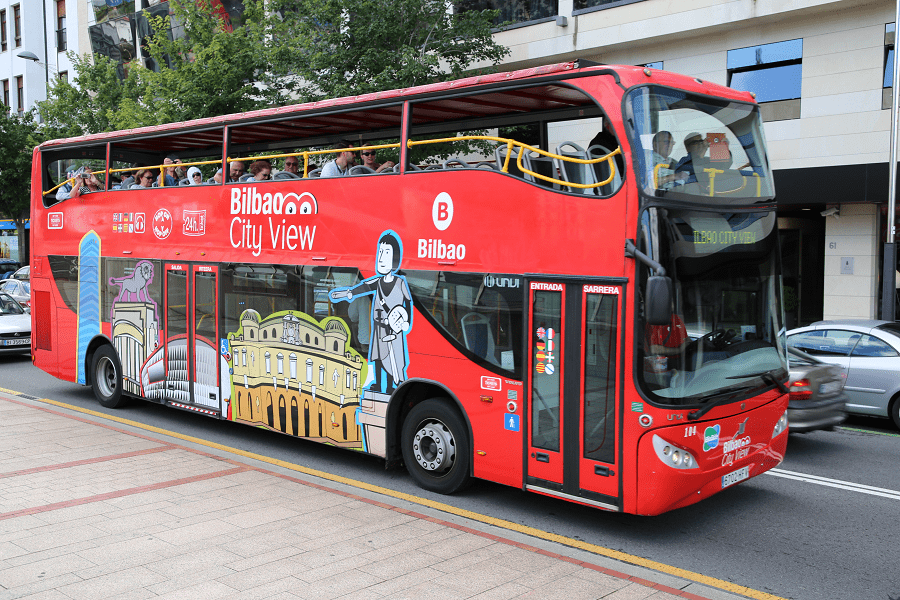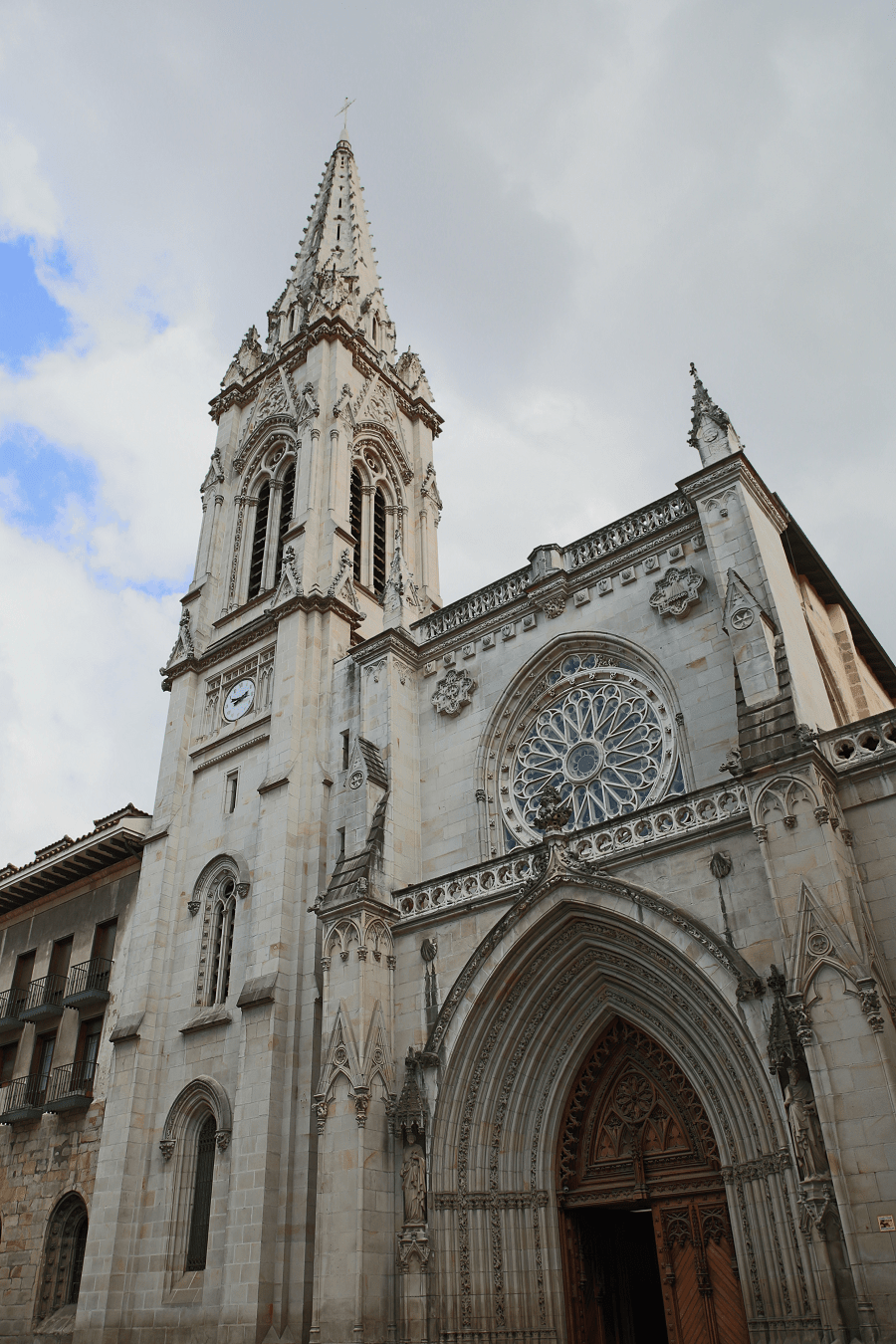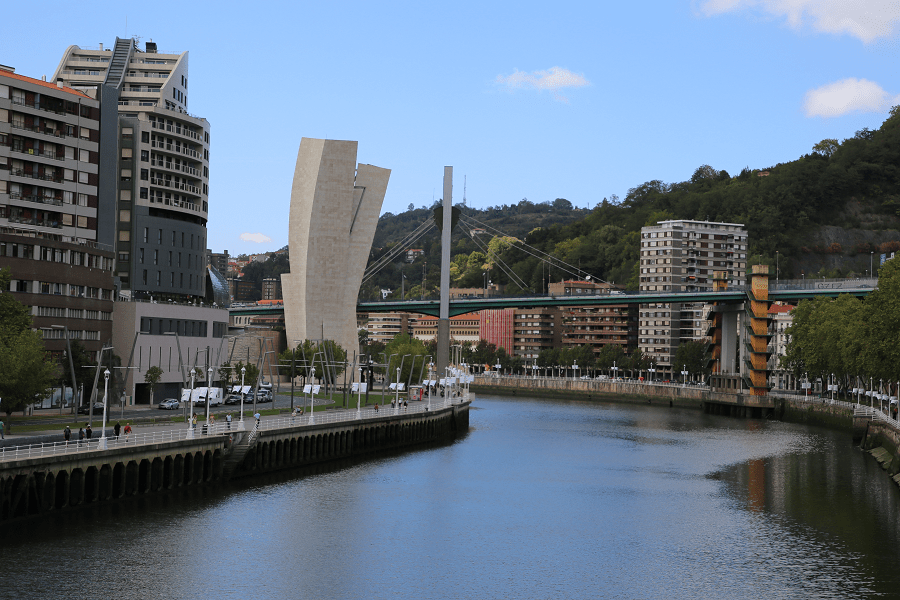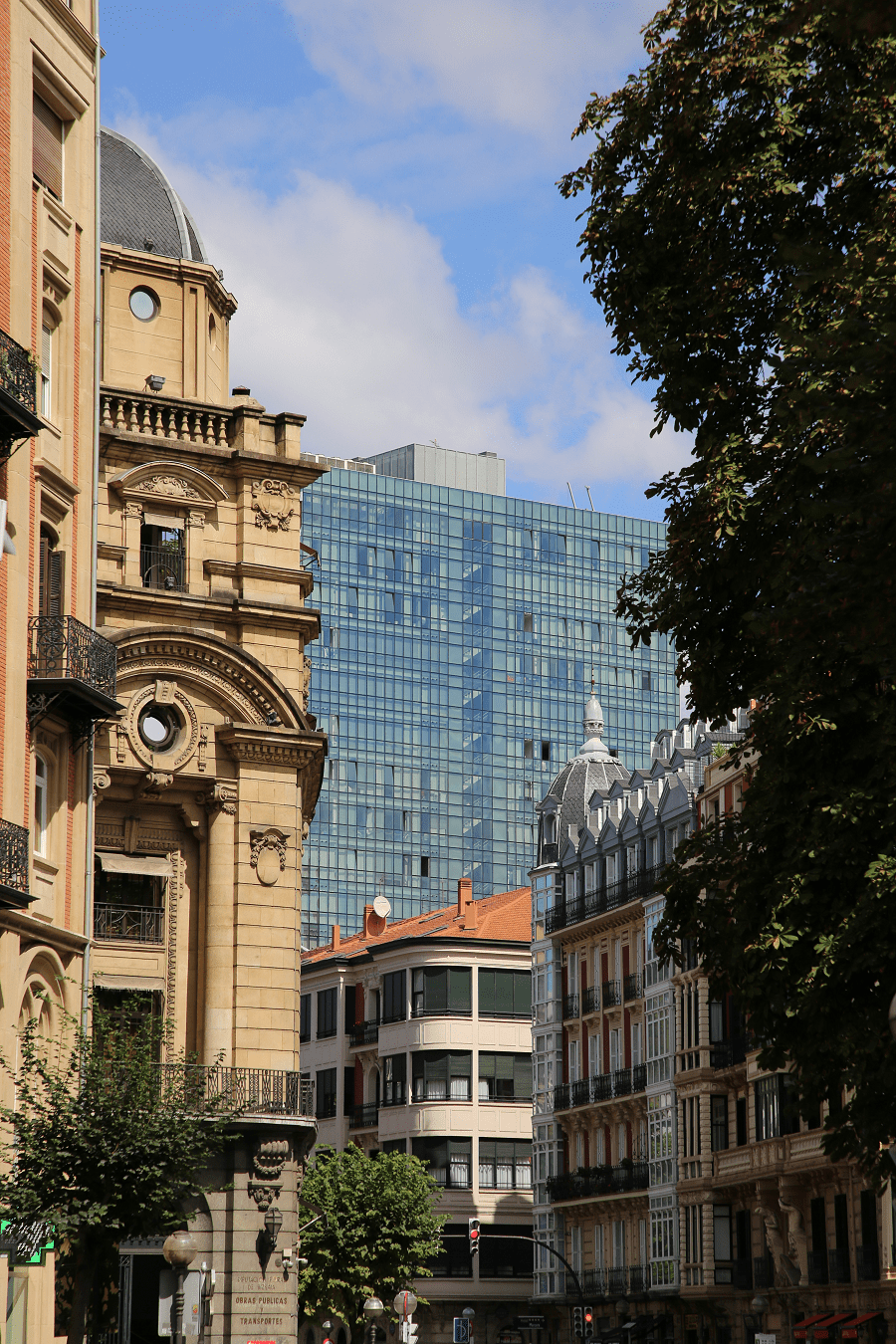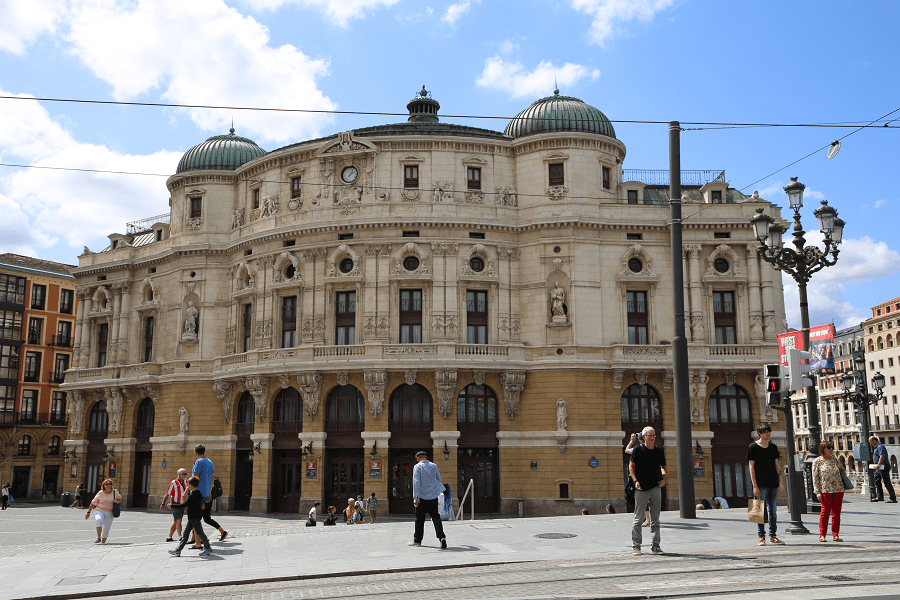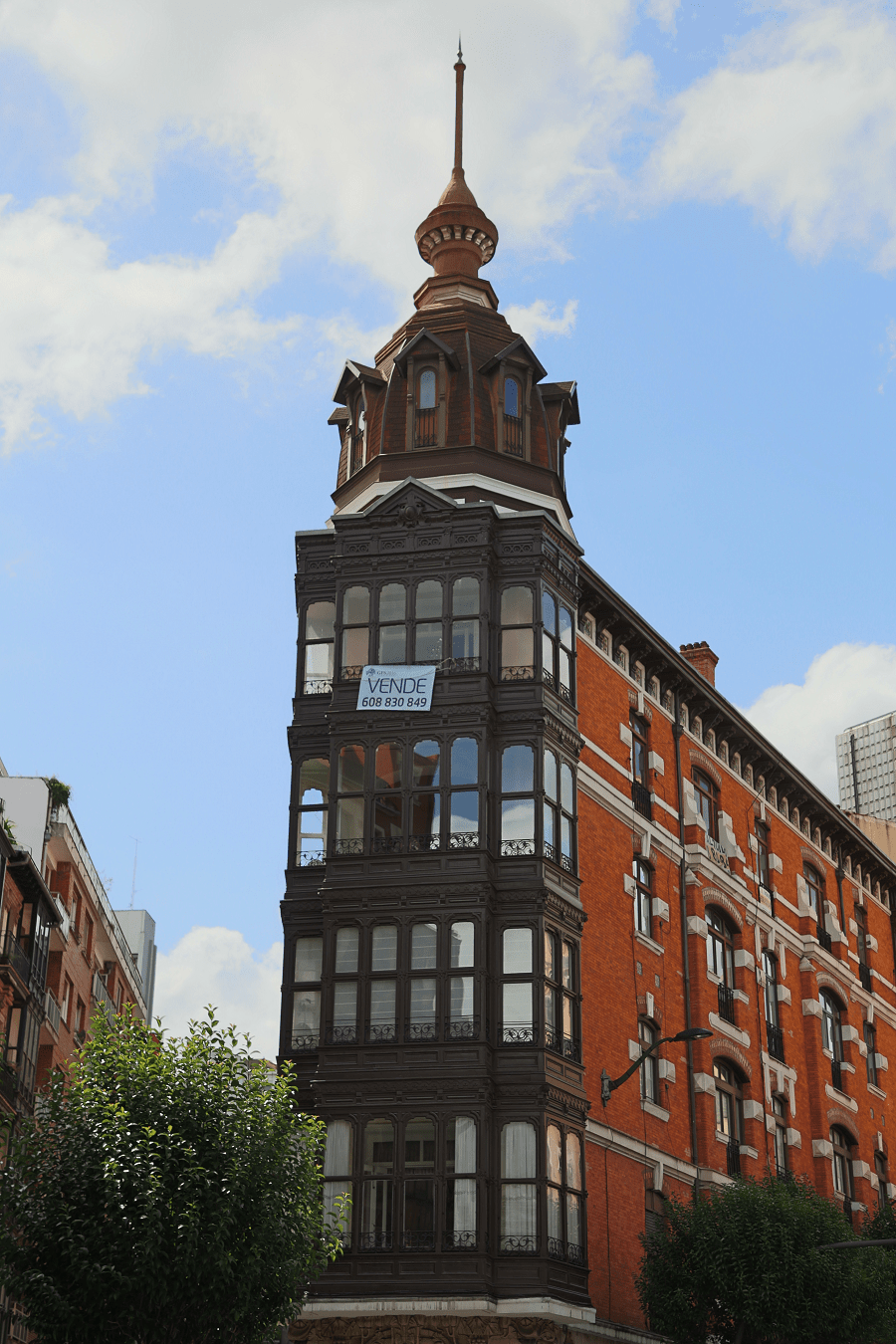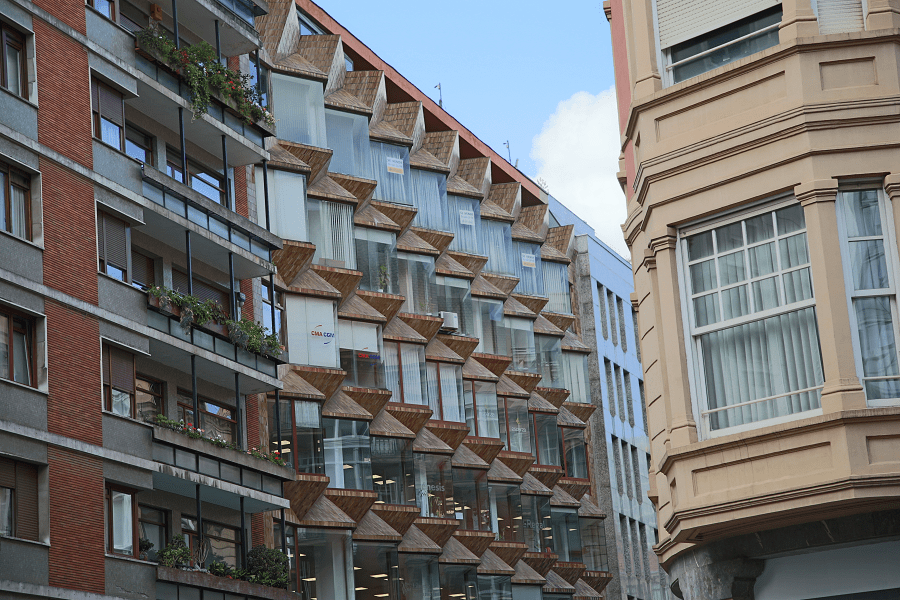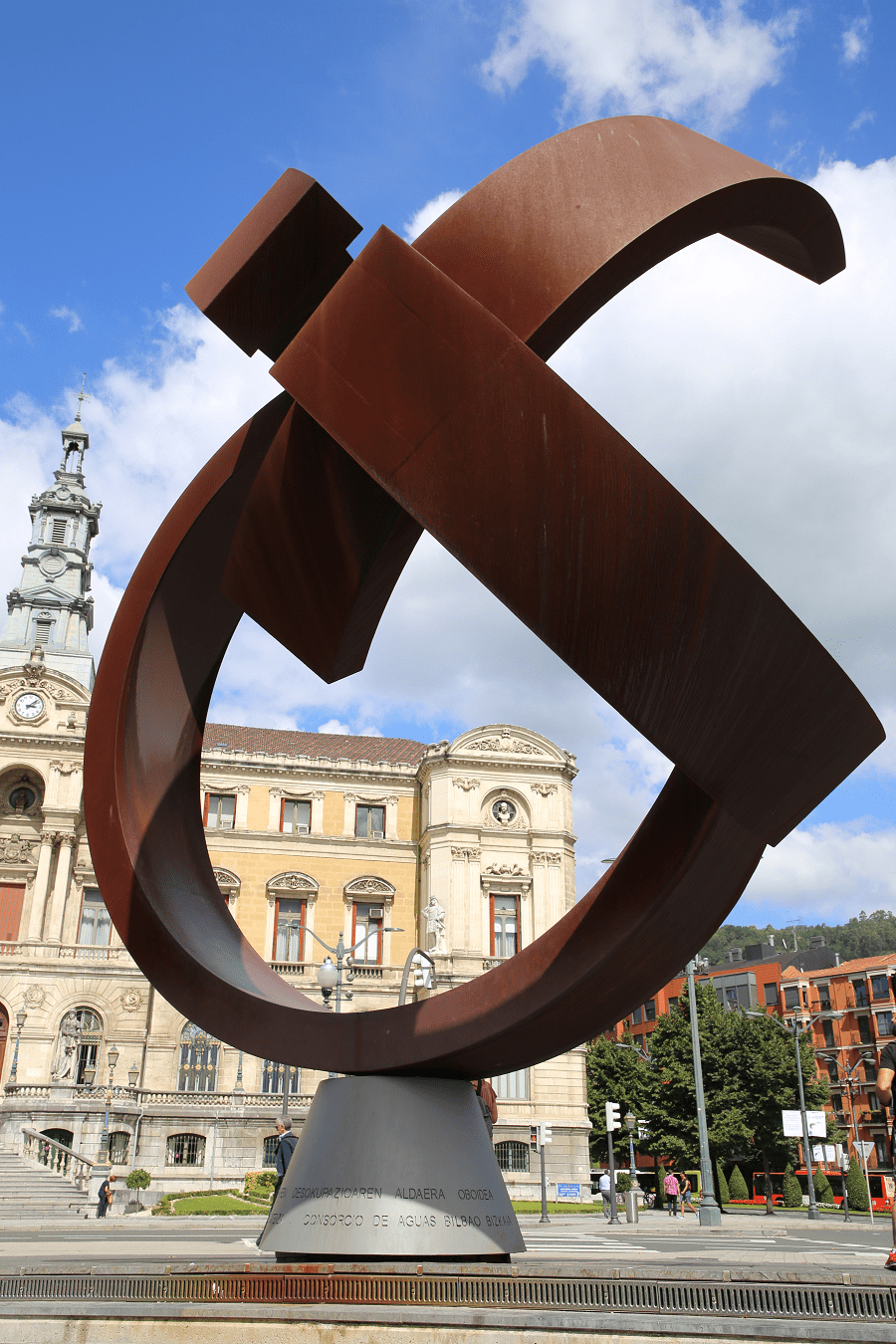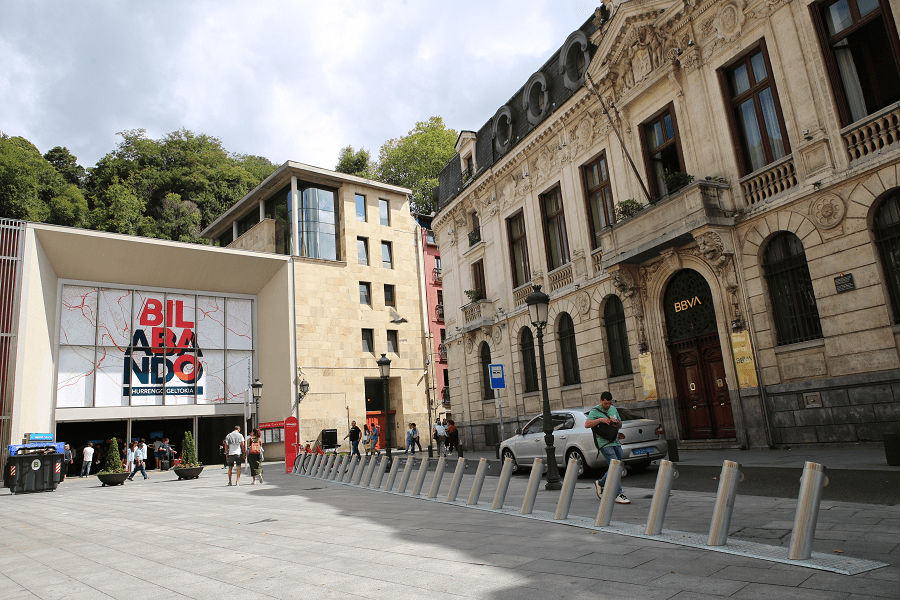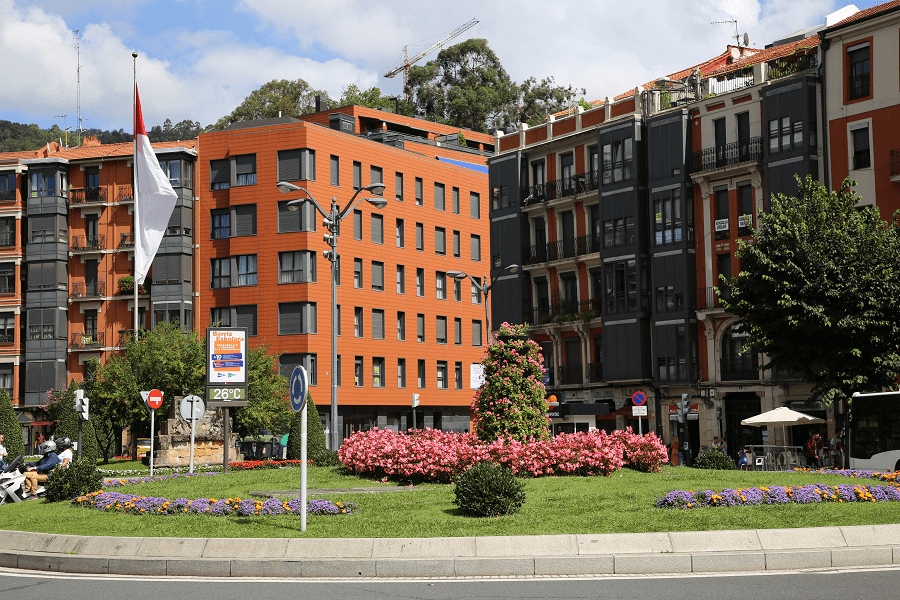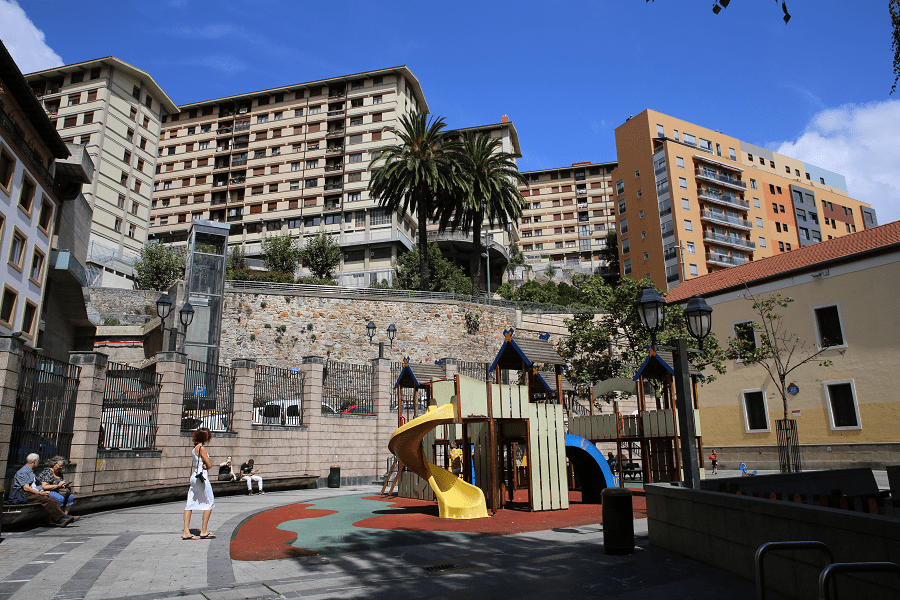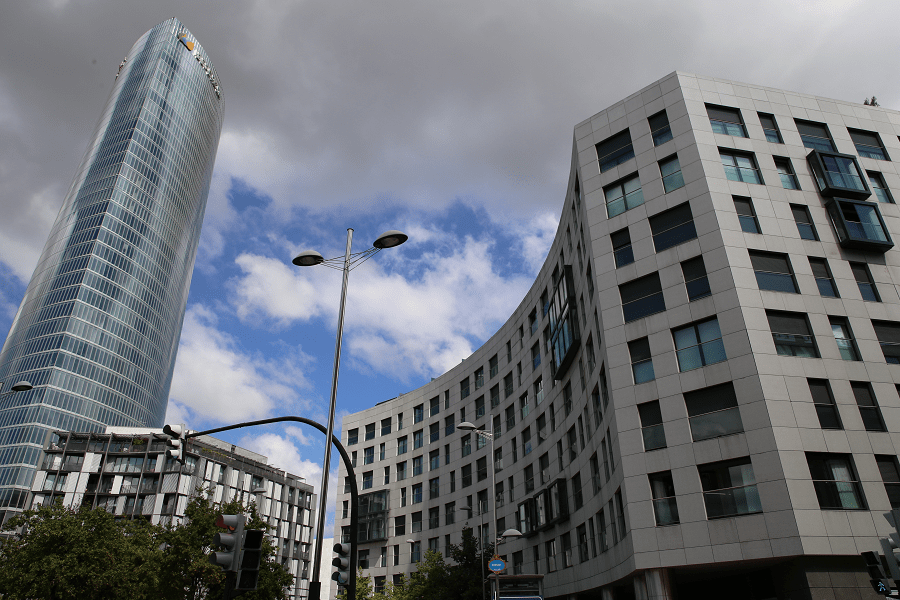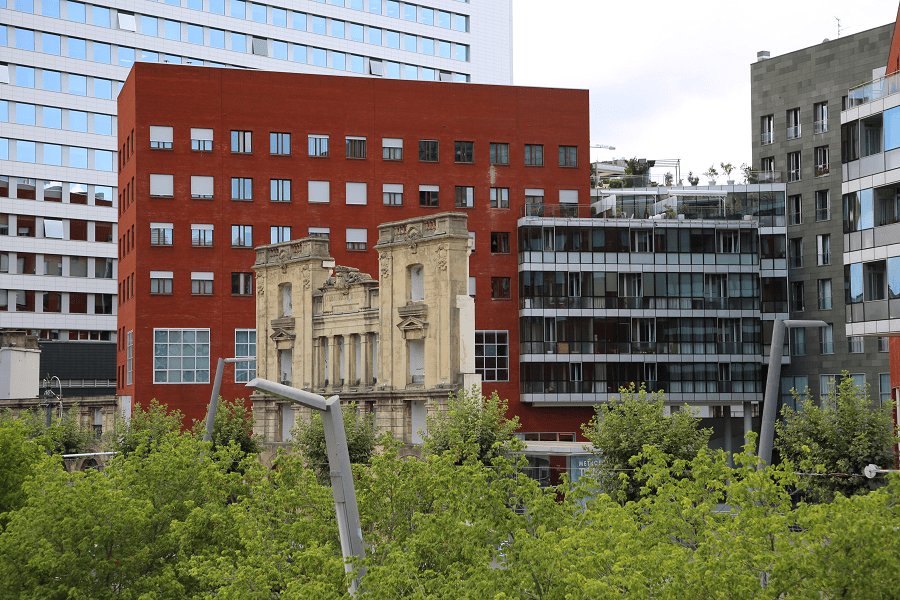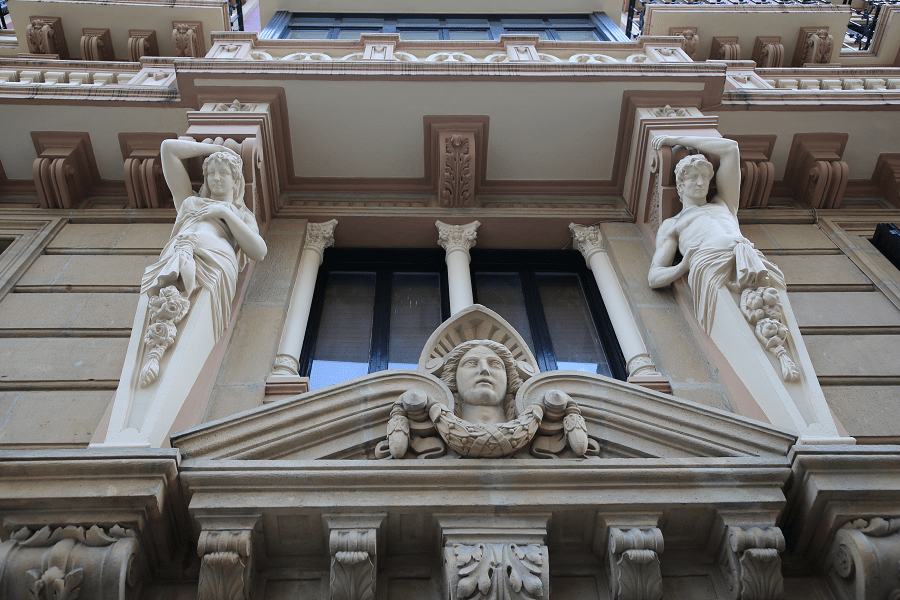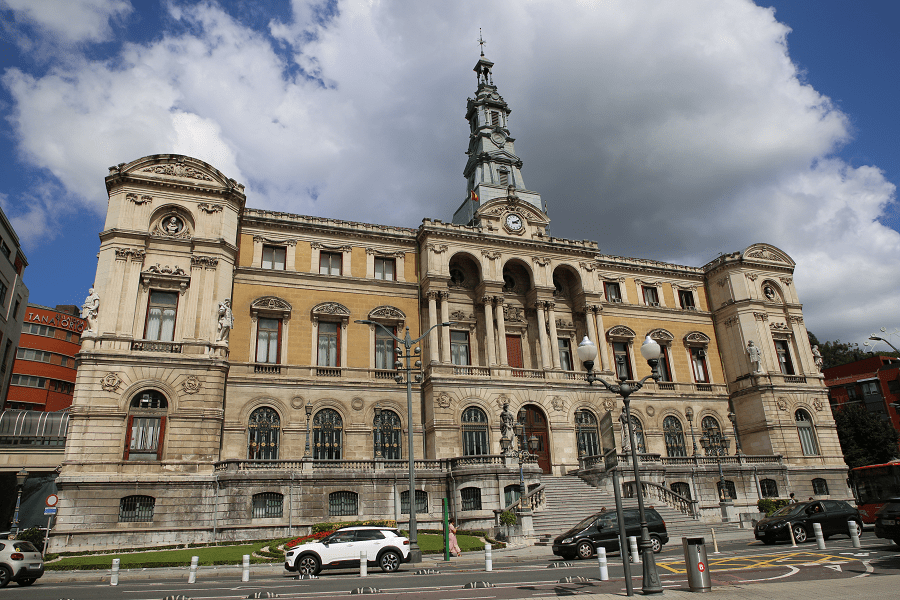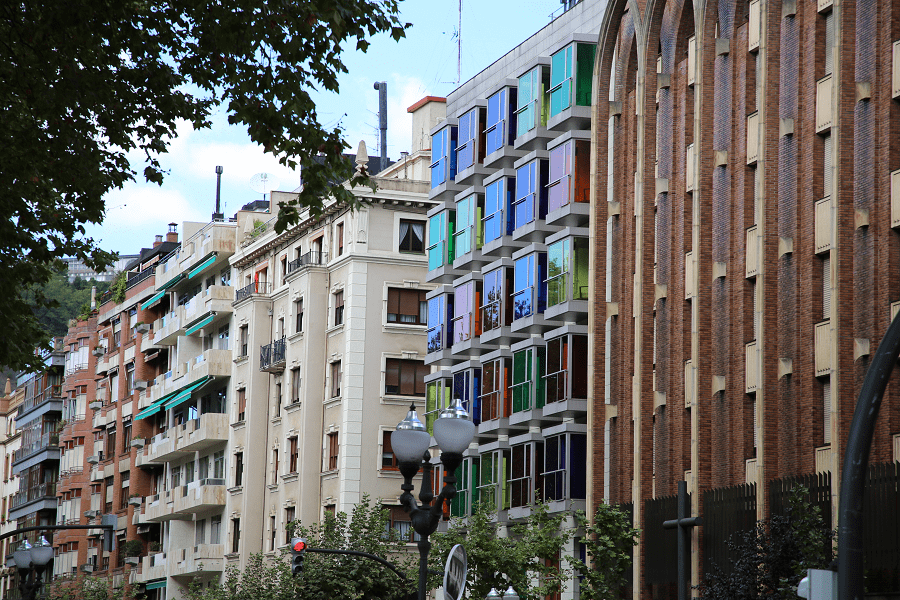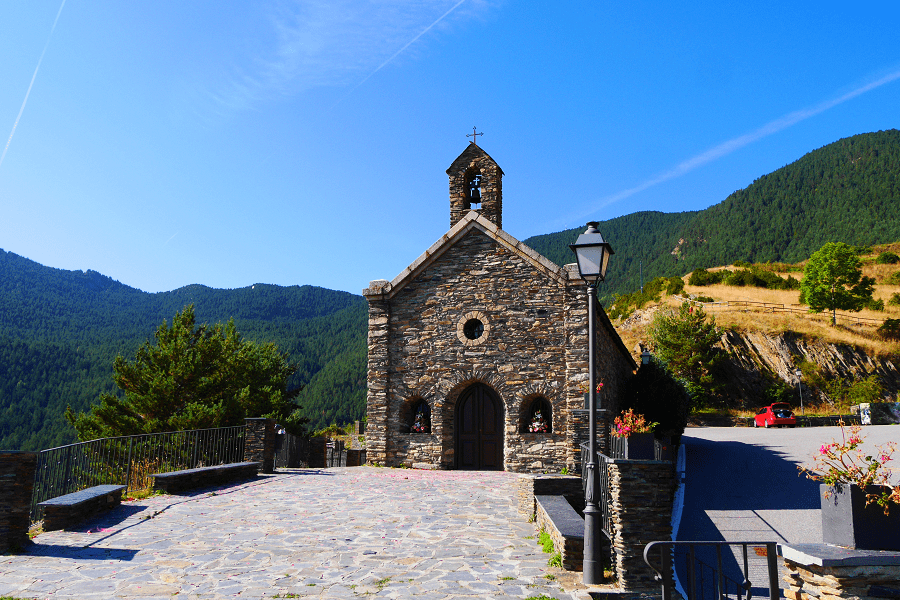Bilbao is a city and a municipality in Spain, Basque country. Located near the northern edge of the Iberian Peninsula, about 16 kilometers south of the Bay of Biscay, near the mouth of several rivers. The city is located in the Basque Mountains, between the large Cantabrian Mountains and the Pyrenees. The Gran Bilbao metropolis’ highest point is Ganeta Mountain (689 meters), followed by Pagasarri Mountain (673 meters), both of them are located on the border with the municipality of Alonsotegi.
The Basque country’s capital is the city of Vitoria-Gasteiz, and the largest Basque city is Bilbao. It is the largest city in northern Spain, in the province of Bizkaia and in the Basque Country as a whole, as well as the tenth-largest city in Spain.
As of 2021, the population was 346 405 people. More than 1 million inhabitants live in the Gran Bilbao comarca together with 35 municipalities, making it one of the most densely populated agglomerations in northern Spain. Bilbao is the main urban area of the territory called the Basque Country.
Bilbao’s main river system is the hydrological artery of the Biscay Sea. The rivers Nervion and Ibaizabal converge in Basauri and form the so-called Estuary of Bilbao.
The city of Bilbao itself, which is part of the Gran Bilbao comarca, is surrounded by the municipalities of Derio, Echevarri (Etxebarri), Galdacano (Galdakao), Lujua (Loiu), Sondica (Sondika) and Zamudio in the north, Arrigorriaga and Basauri in the west, Alonsotegui (Alonsotegi) in the south, Baracaldo (Barakaldo) and Erandio in the east.
Administratively, Bilbao is divided into eight regions (barrutia in the Basque language), which, in turn, are divided into 34 districts (auzoa). Most regions and districts used to be independent municipalities and elizates (forms of local self-government), which were eventually annexed to the city.
Bilbao originally consisted of the Old Town (Casco Viejo) and some houses on the left side of the estuary – now this area is known as Old Bilbao (Bilbao La Vieja).
About 47% of the total number of the Basque autonomous communities’ population lives in the metropolis of Bilbao, of which 15% are registered directly in the municipality of Bilbao.
Spanish is the most commonly spoken language in the city, with second place being taken by the Basque language. At least 51% of the population can “speak some Basque”, and 29% think that they are fluent in Basque according to Bilbao’s city government.
The largest foreign communities in Bilbao are Bolivian and Colombian, consisting of 4,879 and 3,730 people respectively. Other nationalities with more than 1,000 members are Romanians (2,248), Moroccans (2,508), Ecuadorians (1,832), Chinese (1,390), Brazilians (1,273), and Paraguayans (1,204).
The region’s economic status is quite high: the Gran Bilbao comarca has a GDP of 30,860 euros per capita, which is higher than the average for Spain and the European Union.
Bilbao has been the Basque Autonomous Community economic center since the Consulate of the Sea creation in the city in the 16th century, mainly due to the city’s port through which trade was carried out with the rest of the world. The city experienced a powerful economic recovery in the 19th century, based mainly on the development of the nearby iron mines and the ferrous metallurgy creation, which contributed to the development of maritime navigation and port activities. This ultimately led to the formation of a very important shipbuilding industry.
There are iron ore deposits on the Bay of Biscay coast at the Nervion River mouth. One of the country’s oldest and most famous metallurgical plants – Altos Hornos de Vizcaya is located in Bilbao.
Bilbao’s main trade with other countries has always been through the port. This first-class commercial port is one of the five best ports in Spain and currently connects Bilbao with 500 ports around the world. The main markets are Russia, Great Britain, the Netherlands, and Scandinavian countries. Bilbao Port is the fourth busiest port in Spain after Algeciras, Barcelona, and Valencia.
Tourism is also actively developing in Bilbao, and a sharp increase in interest in this region was associated with the Guggenheim Museum’s opening in 1997. The number of tourists visiting Bilbao has been increasing steadily since then. Tourism brings Bilbao about 300 million euros annually. 31% of all visitors to the Basque Country visit Bilbao – according to this indicator, this city is ahead of San Sebastian. Most tourists come here from Catalonia and Madrid but a significant part of the tourists are French due to Bilbao’s proximity to the border with France, followed by the British, Germans, and Italians.
Bilbao is attractive for business tourism, thanks to a modern and well-equipped conference center and the “Euskalduna” concert hall, as well as an exhibition center in the neighboring municipality of Baracaldo.
Most football fans know Athletic de Bilbao club, one of the most successful clubs in the history of Spanish football, and is, therefore a subject of Basque national pride.
The city of Bilbao was awarded the Lee Kuan Yew World City Prize in 2010, established by Singapore, together with the Swedish Nobel Academy. The mayor Iñaki Askuna was awarded the prestigious Mayor of the World Award in 2013, which is awarded every two years by The City Mayors Foundation, in recognition of the urban transformation that has been ongoing in the Biscay capital since the 1990s. Bilbao received the «The Urbanism Awards 2018» as the best European city in 2017.
History
The remains of an ancient settlement dating from the 3rd or 2nd century BC were found in the vicinity of Bilbao on the top of Malmasin Mountain. Burials were found in the Artxanda ridge area as well whose age is about 6,000 years. Some researchers believe that Bilbao’s ancient settlement could be called Amanun Portus, mentioned by Pliny the Elder, or Flaviobriga described by Claudius Ptolemy.
Bilbao was one of the first cities founded in the 14th century – a period when about three-quarters of all Biscay cities were built one after the other.
Diego Lopez V de Haro is considered to be the founder of Bilbao – he published a city charter in 1300, which was approved by King Ferdinand IV of Castile, and founded a new city on the right bank of the Nervión River. See here more history of Bilbao
Climate
Bilbao’s climate is mild, with low pressure, high rainfall (45% of rainy days a year), and less sunshine than in the rest of Spain due to the Bay of Biscay.
The rainiest season in Bilbao is from October to April, with the most rainfall in November. Snow is not a frequent occurrence in Bilbao, although it can be seen on the surrounding mountain’s peaks. Hoarfrost occurs about 10 days a year, mainly in the winter months.
The average daily temperature is 19-20 degrees during the year in Bilbao. July is the driest month in the region, but still not really dry compared to the Mediterranean climate standards.
The ocean’s proximity also means that the two best seasons (summer and winter) in Bilbao are quite mild, with low temperature fluctuations. The average maximum temperature in the summer months ranges from 25 to 26 degrees, and the average minimum in winter is from 6 to 7 degrees.
The highest sea temperature in Bilbao is 21 degrees in August. The average water temperature is 18 degrees in June, and the sea warms up to 20 degrees in July and September.
Transport
Bilbao Airport is the busiest terminal in the Basque Country and the entire North Coast. Bilbao Airport’s passenger flow reached almost 5 million people in 2017. It is located 9 km north of the city, between the Lujua and Sondica municipalities. 15 airlines use the terminal’s services, including Iberia, Lufthansa, and TAP Portugal. There are no direct flights from Russia to Bilbao, but there are a lot of connecting flights from Aeroflot, Airfrance, KLM, and Lufthansa.
Some low-cost airlines, such as Ryanair, use Vitoria Airport also, located near the town of Foronda (59 km south of Bilbao). Flights depart all year round to Bergamo and Tenerife from there.
Bilbao Airport opened in 1948 with regular flights to Madrid. A new terminal building was constructed in 2000, designed by the famous Valencia architect Santiago Calatrava. The terminal has a streamlined design with two symmetrical “wings” and a sharp tip in the center, which is especially noticeable from the side. The terminal received the nickname, La Paloma (“Dove”) due to this unique shape. The structure is made of white concrete and glass.
There are 2 floors of open bright spaces inside the terminal – there are check-in counters and a departure lounge on the upper floor, there is an arrival hall on the lower one.
There is currently a project to double the size of the existing building. The financial crisis delayed the start of this project unfortunately at least until 2019.
Take the BizkaiBus bus from Bilbao Airport to the “Alameda Recalde 14” stop in the city center. The bus runs every 15 minutes, the travel time is 10 minutes, and the fare is about 3.5 euros.
A train leaves every 20-30 minutes from the Elotxelerri-Loiu station near the airport to the Zazpikaleak-Bilbao (city center); travel time is 16 minutes.
One can reach the center of Bilbao from the airport by taxi in 11 minutes, paying about 30 euros.
Bilbao is an important transportation hub for northern Spain. The city is located on two international roads. The E70 European route follows the Bay of Biscay coast, passing through the cities of Santander and Gijon in the west and Eibar, San Sebastian in the east. The E80 European route connects Bilbao with inland Spain in the south, including Burgos and Salamanca, and continues to Lisbon. The AP-68 (E804) motorway runs south from Bilbao, the main road connecting Bilbao with southern Spain and the Mediterranean coast.
The A-8 toll road connects all regions on the northern coast of Spain. It is known as Autovía del Cantábrico (or Transcantábrica) and connects Bilbao with the regions of Cantabria, Asturias, and Galicia; the road continues from Bilbao to the French border along the AP-8 highway. The route goes through Ribadeo, Gijon, and Santander. The A-8 is the main ring road currently in Gran Bilbao too.
Other roads run parallel to the A-8 and AP-8 motorways through Bilbao, or from Bilbao, for example, the N-634 national road connecting San Sebastian with Santiago de Compostela.
Intercity lines connect Bilbao with Madrid and other cities in northern Spain. There are four railway stations in Bilbao: Bilbao-Abando and Bilbao-La Concordia are owned by Adif state company and operated by the Spanish Renfe railway company, while Bilbao-Atxuri and Zazpikaleak / Casco Viejo are owned by the ETS Basque railway network and are operated by the Eusko Trenbideak Basque company.
Simply put, Euskotren Tranbia operates a tram line, Euskotren Trena operates commuter networks, Euskotren Autobusa operates buses, and Euskotren Kargo operates freight trains.
Renfe operates four commuter lines in a system separate from the metro. Three of them operate under the Cercanías brand, and the fourth line is Renfe Feve. Cercanías go above the ground mainly and over long distances, reaching municipalities outside the metropolis, such as Musques, or even outside the province of Biscay, such as Amurrio. Three lines leave from the Bilbao-Abando railway station and the Renfe Feve line – from Bilbao-Concordia.
Bilbao-Abando station, formerly known as the North Station, is the main railway station of the city, Alvia (Renfe) high-speed trains run along the Iberian track to Madrid and Barcelona, while Cercanías trains leave for the suburbs. Special trains are launched from here to Malaga in summer. There is direct access from the station to the metro and tram, as well as to numerous local and regional bus lines.
The U-shaped main station building, reconstructed in 1948 from reinforced concrete, granite, limestone and brick, consists of 5 floors. The second semicircular building with 12 arches is attached to the main hall. The main attraction of Bilbao-Abando Station is a large stained glass panel above the platform’s exit, consisting of 301 glass pieces, 15 meters wide and 10 meters high. The stained glass window depicts a variety of activities typical of the Basque country, as well as symbolic sights such as the Basilica of Begoña.
In 2018, the Ministry of Development and the Bilbao City Hall announced a project that envisages the construction of a completely new Bilbao-Abando station with three underground levels (one for high-speed trains, one for regional and Cercanías trains, and the third one will be the main hall). The station will connect with the new bus station with 13 platforms, as well as with the existing metro station.
There is also the Bilbao Concordia narrow gauge railway station, operated by Renfe Feve in the immediate vicinity of Bilbao Abando. Regular trains leave for the cities of Santander and Leon from here.
The Euskotren Trena Basque company is responsible for regular trains to Bermeo from Bilbao Atxuri Station, as well as to the cities of Durango, Eibar and San Sebastian from Zazpikaleak / Casco Viejo Station.
There are plans to connect Bilbao to the Basque Y high-speed rail network on a European gauge that is being built between the cities of San Sebastian, Vitoria-Gasteiz, and Bilbao by 2023; travel time between these cities will be reduced by half. Basque Y will connect Basque cities with Madrid via Valladolid and France via Irun.
Bus and rail public transport in Bilbao is organized by the Bizkaiko Consortium (Bizkaiko Garraio Partzuergoa), which issues a Barik card – an electronic ticket valid for almost all types of public transport in the metropolitan area of Bilbao and the province of Biscay.
The Bilbao Metro, opened in 1995, consists of a line branching into two – black and orange. The third small line of seven stations was launched in 2017. It will reach the airport in the future. There are interesting metro stations designed by British architect Norman Foster along the line.
Euskotren (abbreviation for “Eusko Tranbia”, which means “Basque Tram”) operates a tram line under the Euskotren Tranbia brand. The tram runs along narrow-gauge rails along the Nervión River, through the central areas of the city, from the Bilbao-Atxuri Station, connecting areas with important sites such as the Guggenheim Museum and the San Mames Football Stadium. Travel time is about 15 minutes along the entire tram line. All tram stops are equipped with route diagrams and displays indicating current times, temperatures and intervals.
You need to purchase tickets (for one trip, for a day or for a month) in special machines installed at each stop to travel around the city by tram. The ticket price is fixed and not tied to zones. There are also uniform tickets for all types of transport in Biscay – Creditrans – for 5, 10 and 15 euros. They are sold at tram and metro stops, at ATMs and kiosks.
Each 25-meter tram is equipped with air conditioning, has 4 doors on each side, 192 places, including 50 seats, which corresponds to the capacity of about three buses. Entrance openings are located at the same height as the platform which allows passengers with disabilities to get inside safely. Every stop is announced in the tram, and pleasant music is broadcasted during the journey. Many tourists prefer the Bilbao tram rather than the metro, as the trip to Euskotren Tranbia allows you to see the city during the trip. It is convenient to get to the Guggenheim Museum and you can get from the bus station to the railway station and back quickly as well.
The city’s bus system is called Bilbobus and has 28 regular bus lines, 8 minibus lines, and 8 night buses, known as the Gautxori (“Night Owl”). Bilbobus network is limited to the city mainly, only a few lines go beyond its borders. The Bizkaibus network with over a hundred lines connects the city with all other municipalities in the metropolitan area, as well as with most cities in the Biscay province and with some in Alava.
A ferry service is provided by the Brittany Ferries French company – the liner leaves from the Bilbao port (municipality of Santurtzi), located 15 km north-west of the city center, and keeps heading for the English city of Portsmouth.
Tourism, museums and main sights
Buildings in Bilbao, representing cultural and artistic value, are made in a variety of architectural styles: gothic and neo-gothic, art deco, modern, and contemporary architecture as in many cities in Spain. The Old Town houses many of the oldest buildings, such as Santiago Cathedral (or Bilbao Cathedral) and San Anton Church (Iglesia de San Antón), depicted on the city’s emblem. Most of the Old Town is a pedestrian area during the day. Nearby is one of the most important religious temples of Bisсay – the Basilica of Begoña (or Basílica de Nuestra Señora de Begoña), dedicated to Our Lady of Begonia, the province’s patron saint.
Santiago Cathedral (Catedral de Santiago) is the main Roman Catholic church in Bilbao. The temple was originally built in the 14-15th century as the main parish church of the city and was declared a cathedral in 1950 only when the Roman Catholic Diocese of Bilbao was created. Presumably, on the site of the cathedral, long before the founding of Bilbao, there was a small fishing village’s ancient church, located on the modern city site.
The temple is dedicated to the Holy Apostle James the Great (in Spanish known as Santiago – the Holy Iago) – largely due to the fact that it is an important point on the route of pilgrims following the Northern branch of the Way of St. James.
The modern cathedral is a mixture of different architectural styles. The main vault and cloister with a magnificent portal belong to the 15th-century Gothic masterpieces. The magnificent 16th-century facade and towers decorated with characteristic Renaissance elements are made in the Renaissance style, and the church bell tower, rebuilt in the 18th-century in the Baroque style, is one of the best examples of this style in the entire Basque Country.
Church of San Anton (Iglesia de San Antón) is dedicated to St. Anthony. It is one of the oldest surviving original buildings in the city. It is depicted on Bilbao city’s coat of arms together with the adjacent bridge of the same name. The temple was erected at the end of the 15th century on the site where the warehouse was located for three hundred years. Further excavations revealed that the church stands on the old 11th century Alcazar walls.
This church received many injuries and was closed twice throughout history. San Anton Temple often suffered from floods that destroyed its interior several times due to its proximity to the Nervion River. The last flood occurred in 1983 -the temple interior, doors, and railings were damaged as a result. The church was bombed and suffered from fires during the war, especially during the Carlist War. And although the Church of San Anton was reconstructed several times, it still preserves many typical Gothic elements such as rib vaults and pointed arches.
Basilica of Begoña (Basílica de Nuestra Señora de Begoña), one of Bilbao’s main symbols, was built in the 16th-century transitional style from Gothic to Renaissance. The Renaissance façade is complemented by a magnificent main entrance triumphal arch. The basilica’s altar is made in a neoclassical style and is of high artistic value.
The basilica suffered from hostilities in different centuries like other churches, extensive cleaning, and restoration work was carried out in 1993-1994, during which the watch dial and the bell were repaired.
Walking along the Casco Viejo, it is difficult to miss or not to notice the Church of St. Nicholas (Iglesia de San Nicolas) – its Spanish-Baroque façade stands out among other historical sites. It was built in the 14th century and restored after the destruction at the end of the 18th century. Its skillfully carved altar is of particular interest to anyone who cares about art and beauty; Juan de Mena made it, alongside the temple’s wall paintings.
Bilbao’s City Hall (Casa consistorial de Bilbao) is located on the Nervión River’s right bank at the Puente del Ayuntamiento bascule bridge, which leads to the central Abando district.
The building was constructed in 1892 by Joaquín Rucoba, on the former site of a convent in the district of Uribarri. It was built in a Baroque style. One of the building’s highlights is the Arab Hall, a richly decorated hall in a Neo-Mudéjar style that resembles the decorations found in the Alhambra of Granada. The hall is used for official receptions and weddings.
Joaquin Rucoba is the creator of another important building in Bilbao – the public theater of Arriaga (Teatro Arriaga), built in 1890 in the same neo-baroque style. The theater is located by the river, next to the bridge leading from Casco Viejo to Abando. It is named after Juan Crisóstomo de Arriaga, known in his time as the “Spanish Mozart”.
The theatre was rebuilt in 1985 after severe flooding destroyed it in August 1983. Restorers still managed to preserve the original decor and furniture.
There is another theater in Bilbao – Campos Eliseos with a luxurious modernist facade on the other side of the Nervion River in the Abando area. This theater’s opening took place in 1902. It was created by the Basque architect Alfredo Acebal and the French decorator Jean Baptiste Darroguy. However, the theater’s fate was quite dramatic – it closed several times and gradually deteriorated. The city’s government bought the building and authorized restoration work finally in the early 90s. Campos Eliseos reopened its doors in 2010. It is considered to be the most advanced theater in Spain in terms of technology nowadays. If you wish, you can visit it on a free tour during which they will tell about the theater’s history and activities.
Abandoibarra, a former industrial area in the north of the Abando district, located next to the Nervion River, began to be updated in the early 1990s. Many symbolic objects were built here, such as the Guggenheim Museum, the Euskalduna Conference Center and Concert Hall, the twin towers of Arata Isozaki, the Iberdrola Skyscraper, and the Azkuna Zentroa multi-purpose venue.
Not far from the Guggenheim Museum there is Euskalduna Conference Center and a Concert Hall (Palacio Euskalduna) – the creations of architects Federico Soriano and Dolores Palacios. It began to be built in 1994 and opened five years later, in February 1999. Euskalduna is a multifunctional cultural and business center where the top-class conferences and congresses are held, performances of the opera house are given, and a magnificent concert hall hosts world-class stars. Euskalduna was recognized as the best congress center in the world by the International Congress Association in 2003.
Euskalduna organizes and hosts a wide range of activities, including cultural, political, business, academic and social events. The main auditorium in the building has 2,164 seats and can host theatre, ballet, concerts, and opera. The Euskalduna centre has two restaurants. One of them, Etxanobe, is a Michelin-starred restaurant.
There is the Iberdrola Tower (Torre Iberdrola) in the vicinity, designed by Argentinean architect César Pelli. It has been the tallest skyscraper in the Basque Country (165 meters) since its completion in 2011.
Isozaki Atea is located on the Nervion River’s left bank, near the Zubizuri footbridge. Its name means Isozaki Gate in Basque – a complex of seven buildings: two glass modern 83-meter twin skyscrapers (Isozaki Towers) and five 6-8-story buildings. The complex was designed by Japanese architect Arata Isozaki. The 23-story Isozaki Towers are the tallest residential buildings not only in Bilbao but throughout the Basque Country. The first two floors are used for mixed-commercial purposes, and the remaining floors are residential.
One example of de-industrialization and the transformation of industrial zones into public ones is the wine warehouse (alhóndiga), built in 1909 and completely transformed in 2010 by French designer Philippe Starck in collaboration with Thibaut Mathieu, into Azkuna Zentroa (Azkuna Center) multi-purpose venue. The Azkuna multifunctional center (the old name is Alhondiga), in which one can spend all day, is located in the Abando district center and consists of an 8-hall multiplex, a fitness center, a library, a pool, exhibition and concert halls, shops and a restaurant. The pool located on the 4th floor is fascinating as the complex’s visitors can see people swimming there over their heads.
Another example of the transformation of industrial and undeveloped city areas is Zorrotzaurre, an artificial island located in the Deusto district, in the northwest of Bilbao. It was first formed as a peninsula in the 50-60s when a canal was built to facilitate navigation along the Bilbao estuary. Zorrotzaurre became a zone of industrial and social decline caused by the economic crisis in the 70s.
A project was approved to upgrade the area in accordance with residential and business needs and a large-scale plan developed by British-Iraqi architect Zaha Hadid in 2012. The canal was fully opened on 8 October 2018, finally turning the former peninsula into an island as part of the plan.
Frank Gehry Bridge (Puente Frank Gehry) connects the Deusto area with the Zorrotzaurri island. Its name is a tribute to the Canadian-born American architect Frank Gehry, creator of the Guggenheim Museum. The length of this four-lane bridge is 75 m, the width is 28 m; there are sidewalks for pedestrians and bike paths on both sides. This is the first bridge in Bilbao using exclusively LED lighting.
Bilbao captivates visitors not only with its history but also with the spirit of freedom and ancient churches in general. There are as many as 17 bridges thrown within the city across the banks of the Nervion River, which passes through Bilbao and flows into the Bay of Biscay; each bridge has its own peculiarity and history. Among the most interesting bridges are Zubizuri, which in Basque means “White Bridge” – a spectacular suspension footbridge created by Santiago Calatrava and opened in 1997, as well as the Princes of Spain Bridge, also known as “La Salve” – cable bridge of 1972, transformed by French conceptual artist Daniel Buren in 2007. The Guggenheim Museum was built right under the La Salve bridge, literally integrating the bridge into the museum’s structure.
The bridge’s unusual design consists of a curved walkway which is supported by steel suspension cables from an overhead arch. The structure of the bridge is painted white and the bridge deck consists of translucent glass bricks. One should walk on the bridge with caution in wet weather as the glass blocks become quite slippery.
Alberto and Sylvester Palacio (brothers) built between 1890 and 1893 the world’s first transporter bridge or flying ferry (Vizcaya Bridge) on the Nervion River between the municipalities of Gran Bilbao Portugalete and Getxo. The bridge is currently in operation, transporting several dozen people and six cars from one bank to another on its gondola in 1.5 minutes.
The Deusto Bascula Bridge was designed following the example of the Michigan Avenue Bridge in Chicago and opened in 1936.
The San Anton Bridge (Puente de San Antón), located next to the Church of San Anton, is the oldest bridge in the city, being open since 1318. It has great historical significance – in the Middle Ages merchants used this bridge to transport goods from Biscay to Castile since San Anton was the only bridge over the river after its construction for centuries. This medieval arched bridge connects Bilbao La Vieja and Casco Viejo (Old Town) districts. The bridge was repaired and rebuilt several times. The last reconstruction dates back to 1937. The San Anton Bridge is one of Bilbao’s emblems and is depicted on the city’s coat of arms. The bridge represents an amazing architectural composition together with the church of San Anton, especially if you make photos from the river.
Bilbao’s main square is located in the very center of the city, in the Abando area – it is called Moyúa Square or Elliptic square. The square was conceived in 1876 as a central hub in the middle of Gran Via de Don Diego Lopez de Haro Avenue, from where the main eight streets would diverge. The square was called Elliptical because of its shape. In the 1940s, the square was restored, after which it took its current shape, with a fountain in the center and several English and French gardens, and was renamed in honor of the former mayor of the city, Federico Moyúa.
Chavarri Palace (Palacio Chávarri) built in the Flemish style is the most notable and outstanding building in Moyua Square. It was built in the early 20th century and its style resembles the palaces built during the Renaissance period in Antwerp or Bruges. One of the most interesting features of the buildings is that none of the sets of windows is the same as any other. The palace accommodates the Government of Spain in the province of Biscay.
There is another neoclassical square significant for the city – New Square (Plaza Nueva or Plaza Barria) in the Casco Viejo district not far from Arriaga Theater. Its name comes from the previously existing Plaza Vieja or Old Square. The square built in 1821 is enclosed by arcaded buildings and accessed by arches known as cuevas (caves).
The main building was the site of the Biscay government until a new palace was built in 1890. The place is now the site of Euskaltzaindia, the Basque language Royal Academy.
The arches are home to many traditional taverns and restaurants, some of the most ancient and typical of the city, and some gift and souvenir shops.
Each Sunday, New Square provides space for a traditional flea market where ancient books, coins, stamps, birds, and flowers are sold. City guests will appreciate the opportunity to use the free Wi-Fi Internet access in the square in addition to all this.
Bilbao has a traditional market. La Ribera Market is located near the Old Town and the Church of San Anton, on the Nervion River’s right bank. Its area of 10,000 square meters makes it the largest indoor market in Europe. The market trades mainly in fresh products: meat, fish, seafood, vegetables, fruits, and greens. Part of the market is given to local farmers. A market was located in this place back in the 14th century but the current building was erected in 1929 in the then fashionable art deco style. The market has beautiful large stained glass windows, and its internal open space is filled with natural light thanks to this style.
Speaking about vivid examples of modern architecture in Bilbao, one cannot fail to mention the amazing Osakidetza prism house, located in the city center. Architect Juan Coll-Barreu designed it and the building was finished in 2008.
The unusual transparent building, with a multifaceted dynamic facade, is quite functional. It houses the Basque Department of Health now.
One can highlight the “Bilbao Arena” and the “San Mames” stadium as the significant sports facilities in Bilbao. The covered “Bilbao Arena” central hall can hold up to 10 thousand people for basketball games. This is the local Bilbao Basketball Club’s home. The facilities also include swimming pools and gymnasiums for the local residents use, and the central hall is also used for concerts and other kinds of shows.
San Mames stadium is also called the Nuevo (New) San Mames stadium, as it was built in 2010-2013 instead of the old stadium of the same name, which has been the home arena of the Athletic Bilbao football club since 1913. The new stadium project designer is the Basque architect Cesar Azkarate. The stadium has an original facade made of glass panels in the form of scales located between the rows of a metal structure; the facade is highlighted at night like the Munich Alliance Arena. The new San Mame stadium accommodates 53,332 people.
Bilbao has more than a dozen museums spanning a range of areas, including art, science and sport, which have played a central role in calling Bilbao one of the most creative cities in the world. However, the most famous and iconic museum that made Bilbao a famous and popular city for the whole world is the Guggenheim Museum, one of the largest in Spain. This kind of mecca of contemporary art is one of several museums owned by the Solomon Guggenheim Foundation.
The Guggenheim Museum was built on the site of an old dock and a wooden warehouse, next to the Nervion River. The creator was Canadian-American architect Frank Gehry. The museum was inaugurated on October 18th, 1997 by the King of Spain, Juan Carlos I.
This outstanding modern architecture is rightfully considered one of the most important buildings in the world that appeared after 1980. The Guggenheim Museum received the title of the most impressive building, made in the style of deconstructivism almost immediately after its opening; it is still known as a 20th-century masterpiece. The futuristic building has become a model and inspiration for other similar buildings around the world.
The unusually shaped museum, created from glass, stone, and titanium, organically and extremely successfully fits into the city’s landscape, occupying 32.5 thousand square meters. Lined with sheets of titanium, it looks most impressive from the riverside. A huge 13-meter flower sculpture “Puppy” by Jeff Koons and a giant metal spider by Louise Bourgeois, the size of a 3-storey building, are installed near the museum.
Most of the museum’s exhibits belong to the permanent Guggenheim collection, but the museum itself bought a number of paintings by artists such as Clyfford Still, Mark Rothko, Willem de Kooning, and also commissioned new works to Richard Serra, Jenny Holzer, Francesco Clemente, and Anselm Kiefer. In addition, the museum houses large-scale work, contemporary artists’ works, and installations, tied to a specific site, including Basque and Spanish.
It is worth noting that the traditional paintings and sculptures are in the minority in the museum, compared with installations and various electronic forms. The collections mainly feature avant-garde art, 20th-century abstraction, and pointless art. The highlight of the museum’s collection and its only permanent exhibit is Richard Serra’s The Matter of Time, including his early work “Snake”, a series of twisted ellipses made of weathered steel, housed in the 130-meter Arcelor Gallery.
Among the contemporary art exhibits in other areas, it should be noted that there are works in cubism, expressionism, pop art, and conceptual art style. You can see the works of Miro, Kandinsky, Malevich, Picasso, and many other of the 20th century geniuses here.
The temporary museum exhibits often change; various thematic exhibitions focused on different countries’ art are regularly held, for example, expositions of Russian or Chinese art.
When you leave the Guggenheim Museum, do not forget to take a ride on the funicular near the museum. The funicular was opened in the 19th century and functions perfectly today. It will take you in three minutes to the very top of Artxanda Mountain, where there is a relaxation area, restaurants, a sports complex and a balcony with panoramic views, from where you can enjoy breathtaking views of Bilbao and the surrounding area.
The Bilbao Museum of Fine Arts (Museo de Bellas Artes de Bilbao), located in the Doña Casilda Iturrizar Park and founded in 1908, contains an impressive collection of Spanish and European art from the 12th century to the present day. The collection is divided into five main sections: ancient art, classical art, modern art, Basque art, work on paper and applied art. It is the second-largest and most visited museum in the Basque Country, after the Guggenheim Museum, and one of the richest Spanish museums outside of Madrid.
The museum changed locations several times before it was finally housed in the current large neoclassical building in 1945. The building expanded in 1970 and 2001 due to the growth of the museum’s collection. Today the museum has a total area of 13,914 m2, of which 5,089 are distributed in 33 rooms for the permanent collection, temporary exhibitions in 1142 and the rest in domestic and visitor’s services. The museum’s collection currently boasts more than ten thousand works including 1,500 paintings, 400 sculptures, more than 6,500 works on paper and 1,000 pieces of applied art.
The collection of the period until the 20th century is concentrated mainly around famous Spanish artists such as El Greco, Francisco de Zurbaran, Bartolome Esteban Murillo, and Francisco Goya. Of particular interest are the Flemish and Dutch schools of painting with the famous works of Anthony van Dyck, Mabuse, Benson, Coecke van Aelst, Mandyn, Hans Vredeman de Vries, Marten De Vos, Jordaens, Grebber, and Ruisdael.
The museum exhibits one of the best collections of Basque art with works created from the 19th century to the present. Contemporary art connoisseurs can be attracted by the avant-garde collection, from the post-impressionism of Paul Gauguin to pop art and expressionism of Francis Bacon.
Among the many works on paper, it is worth mentioning the graphics and engravings of Albrecht Dürer, Van Mekenem, Georg Pencz, Goltzius, Rembrandt, Sandrart, Piranesi, Goya, Fortuny, Carlos de Haes, Cezanne, Picasso, Duchamp, Lipchitz, Hokusai, Rouault, Hockney, Allen Jones, Immendorff, Bacon, Antonio Saura, and others.
The Basque Archaeological Museum (Arkeologi Museoa) holds important collections related to the region’s background, as well as ethnographic exhibits. The museum is located in the Casco Viejo quarter, and the museum building, designed in a classical style, is included on the Conjunto histórico Spanish National Heritage List.
A collection representing the period from prehistoric times to the Middle Ages is on the museum’s ground floor. You can see part of the prehistoric Basque fishing boat here too. The second floor is occupied by exhibits relating to the period from the Middle Ages to the present day.
Most of the museum’s extensive collection (more than 2 thousand exhibits) was discovered during excavations on the Bay of Biscay coast and other Basque Country territories. In general, the Archaeological Museum often hosts exhibitions on the Basque people’s history.
If you are interested in the Basque people’s history, their traditions, culture, and everyday life, then we recommend visiting the Basque Museum (Euskal Museoa Bilbao or Museo Vasco) in Casco Viejo. The Basque nationality is still considered largely mysterious for scholars studying the Basque history and language, which, incidentally, is not similar to any language or dialect and is not related to any language group. The museum is housed in a former 17th-century Jesuit school. Dwelling and boat models, furniture, household items, ceramics, tableware, artisanal machine tools, and textiles presented in the exhibition belong to different historical eras.
Bilbao’s Old Town also houses the Diocesan Museum of Religious Art (Eleiz Museoa), and the Maritime Museum (Bilboko Itsas Museoa), which houses ships and other important exhibits related to the history and culture of fishing and shipbuilding in the region, and is located on the Nervion river bank. The most important Maritime Museum exhibit is an exact replica of a 17th-century consular Basque ship built from preserved paintings. You can go up, inspect the main premises on ships located outside at the shipyard docks, stand in the captain’s bridge.
Football in Bilbao
Football in Bilbao is a national treasure. Athletic Bilbao is a Spanish professional football club, founded in 1898. Included in the list of three Spanish clubs that have never left top Spanish division.
Bilbao’s gastronomy and restaurants
Most of Bilbao’s traditional dishes are based on seafood and fish, such as European eel and Atlantic cod. For the most part, Bilbao is characterized by general Biscay gastronomy, which includes dishes such as bacalao al pil pil (codfish cooked with olive oil, garlic, and guindilla hot pepper), bacalao a la vizcaína (salted cod with biscay sauce, with choricero pepper and onion), merluza en salsa verde (hake fish with green sauce), chipirones en su tinta (squid served in its own ink), revuelto de perretxikos (omelet with mushrooms).
Canutillos de Bilbao (puff pastries with cream or chocolate), pantxineta (puff pastries with cream and almonds), rice cakes, and bollos de mantequilla (cream buns) are very popular desserts.
Pantxineta is the most typical and popular Basque Country dessert. It consists of a puff-pastry bun filled with thick custard cream; it is topped with almonds and often decorated with icing sugar. It is usually served warm, either reheated or, whenever possible, straight out of the baking oven. Sometimes it is served along with hot chocolate syrup, which is poured on top of the pastry.
As in other Basque cities, Bilbao’s cuisine is known for a wide variety of snacks, among which the most typical and traditional are pinchos (pintxo in Basque). They are served usually in bars and consist of small pieces of bread, on which a specific snack is placed: seafood, fish, vegetable combinations, potato tortilla, etc. Unlike tapas, pinchos are ordered as a separate dish, and not served with a drink.
Other snacks include rabas (squid rings in batter, fried in oil, usually served with lemon slices), Spanish tortilla (omelet with eggs and potatoes, where onions and peppers are added sometimes), txampis (stuffed mushrooms), triángulos (traditional Bilbaon triangle sandwiches), gildas (one or more olives, guindilla peppers, and anchovies, all joined together with a toothpick).
If we talk about drinks, then chakoli (txakoli), a slightly sparkling, very dry white wine, usually drunk as an aperitif, is typical in the region. Biscay Chakoli (Bizkaiko Txakolina) served in Bilbao is a protected brand of white wine produced in the province of Biscay. Cider, pacharan (patxaran) – liquor with the aroma of thorns, and Rioja wine are also popular in Bilbao.
Bilbao has a lot of good bars and restaurants serving all the above-mentioned dishes and drinks. There are especially a lot of pleasant and colorful establishments in the Old Town area.
There is an interesting and popular phenomenon in Bilbao and other Biscay cities which is known as chokos (txokos) – closed gastronomic societies where people get together to cook, experiment with new ways of cooking, eat and communicate.
The development of Txokos has had a significant impact on Basque cuisine. Many traditional dishes that have almost disappeared have been saved or revived thanks to chokos. It has also brought a lot to the Bilbao gastronomy, as members of these closed communities often experiment with new dishes, ingredients, and cooking methods, and experience different versions of existing dishes. People exchange information in chokos on where to get the best quality and cheapest ingredients too. All this, in turn, led to the fact that the Basque cuisine is very sophisticated, but at the same time quite affordable.
There are 20 Michelin list restaurants in the city:
- Mina, Muelle Marzana, 100 – 130 EUR • Creative cuisine, Seasonal Cuisine (one star)
- Ola Martín Berasategui, De la Ribera 13, 65 – 125 EUR • Contemporary Cuisine, Traditional Cuisine (one star)
- Zortziko, Alameda de Mazarredo 17, 70 – 99 EUR • Contemporary Cuisine (one star)
- Etxanobe Atelier, Juan de Ajuriaguerra 8, 125 – 150 EUR • Creative Cuisine (one star)
- Nerua Guggenheim Bilbao, Avenida de Abandoibarra 2, 45 – 80 EUR • Creative Cuisine (one star)
- Zarate, Licenciado Poza 65, 60 – 105 EUR • Seafood, Traditional Cuisine (one star)
- Gure-Toki, Plaza Nueva 12, 3 – 9 EUR • Basque, Seasonal Cuisine
- Los Fueros, De los Fueros 6, 30 – 60 EUR • Basque Cuisine
- Patri Martin Berasategui, De la Ribera 13, 40 – 55 EUR • Traditional Cuisine
- Bascook, Barroeta Aldamar 8, 35 – 83 EUR • Modern Cuisine
- Aitor Rauleaga, Colón de Larreátegui 9, 60 – 80 EUR • Basque Cuisine
- KUMA, Ercilla 8, 60 – 90 EUR • Japanese Cuisine
- La Despensa del Etxanobe, Juan de Ajuriaguerra 8, 55 – 105 EUR • Traditional Cuisine
- De Santa Rosalía, Diputación 8, 40 – 65 EUR • Meats and Grills, Traditional Cuisine
- Kimtxu, Henao 17, 25 – 42 EUR • Fusion
- Yandiola, Plaza Arriquibar 4, 50 – 65 EUR • Traditional Cuisine
- Txirene, Poza Lizentziatuaren 26, 40 – 55 EUR • Traditional Cuisine
- Aizian, Lehendakari Leizaola 29, 52 – 85 EUR • Modern Cuisine
- La Escuela, Carretera Enekuri-Artxanda, 18 – 35 EUR • Contemporary Cuisine, Basque Cuisine
- San Mamés Jatexea, Raimundo Pérez Lezama, 38 – 80 EUR • Traditional Cuisine
Shopping
Bilbao offers visitors a wide selection of products, from international brands to boutiques with unique collections.
The main shopping areas are on Plaza Moyúa, the Casco Viejo and the Gran Vía. Plaza Moyúa is a good place to find high-end brands, while Casco Viejo, the old town of Bilbao, is full of small boutiques and art galleries. You will also find many large boutiques along Gran Via.
Main information
Area: 41.3 sq. km
Coordinates: 43 ° 15′25 ″ N 2 ° 55′25 ″ E
Population: 345,800
Languages: Spanish, Basque
Currency: Euro
Visa: Schengen
Time: Central European UTC +1




